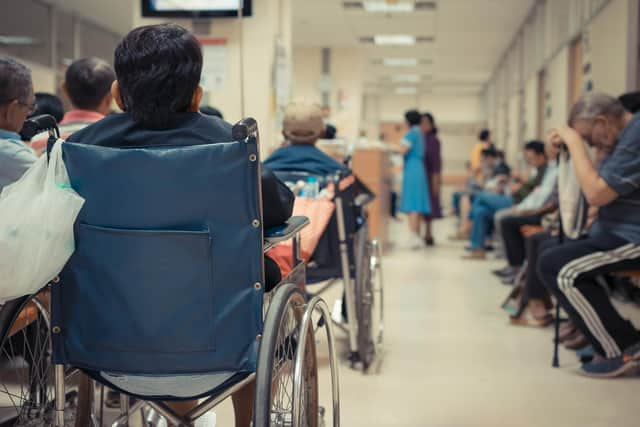Hospital safety: Bosses defend Sheffield hospitals as safety concerns raised over bed occupancy levels
and live on Freeview channel 276
The Royal College of Emergency Medicine has previously backed an occupancy rate of 85 per cent as being generally considered to be the safe limit for bed occupancy – and NHS England and NHS Improvement have previously suggested 92 per cent should be considered the recommended safe limit for bed occupancy in winter.
But figures for Sheffield Teaching Hospitals NHS Foundation Trust over the week between December 26 and January 1 stood at 90.7 per cent, according to Government figures – a figure above one of the ‘limit’ figures, but slightly below the other. The trust runs Sheffield’s adult hospitals including the Northern General and the Royal Hallamshire.
Advertisement
Hide AdAdvertisement
Hide AdDr Jennifer Hill, medical director, Sheffield Teaching Hospitals NHS Foundation Trust said: “Like most other trusts across the NHS, we have peaks and troughs in demand which means our bed occupancy levels vary day by day and hour by hour. In winter, NHSE guidance is that 92 per cent bed occupancy is the ceiling and the statistics just released show our occupancy was circa 90 per cent at that time. We continually monitor our bed usage and at times of pressure we will also look to open additional bed capacity if we can.”


At Sheffield Children's NHS Foundation Trust, which runs Sheffield Children’s Hospital, 63.4 per cent of hospital beds were occupied.
The Sheffield figures were below other South Yorkshire hospitals. The bed occupancy figure for Doncaster Royal Infirmary’s trust was 90.9 per cent. The trust running Barnsley Hospital was 96.7 per cent, and the figure for the trust running Rotherham Hospital was 95.4 per cent.
Commenting on figures nationally, Nuffield Trust chief executive Nigel Edwards said that “no health system should be running their hospitals this hot”. The Nuffield Trust is an independent health think tank which aims to improve the quality of health care in the UK by providing evidence-based research.He said: “It is almost certain that levels of overcrowding in NHS hospitals in England are even worse than the published data suggests due to the time of day when it is recorded,” he said. “The lack of manoeuvre and available beds is leading to dangerously busy and difficult conditions in accident and emergency departments, waiting rooms and corridors.”He added that for years before the pandemic the NHS was “forced to push the boundaries of what is effective and safe occupancy rates”, adding that overcrowded hospitals increase risks to patients and link to higher rates of mortality.
Advertisement
Hide AdAdvertisement
Hide AdA Department of Health and Social Care spokesperson said: “We recognise the pressures the NHS is facing following the impact of the pandemic and are working tirelessly to ensure people get the care they need, backed by up to £14.1 billion additional funding for health and social care over the next two years.
“This includes investing an additional £500 million to speed up the safe discharge of patients from hospital, creating the equivalent of 7,000 more beds nationally and establishing 24/7 data driven system control centres in every local area to manage demand and capacity.”
“There are record numbers of nurses and doctors working in the NHS – almost 4,700 more doctors and over 10,500 more nurses compared to October 2021.”
